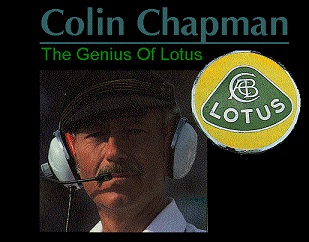
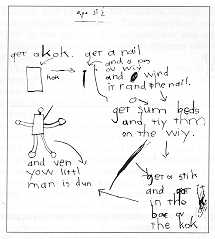
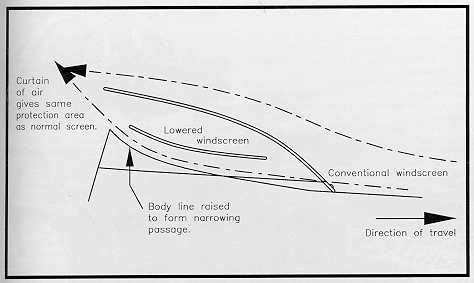
It was soon after entering the London University, that he and
Colin Dare began a second hand car sales business. The year being
1946 cars were scarce and the business boomed. Often lectures were
skipped in order that "deals" could be secured. The business
expanded into modifying and improving the cars before selling
them, which brought greater profits. Unfortunately, this booming
business was not to last as in 1947 the British
government did away with the basic petrol rationing and the demand
for second hand vehicles crashed. The remnaint though, an old 1937
Austin 7, was to be the basis of the first Lotus, the
Mark 1. Only the chassis and drivetrain were retained as
Colin fashioned a totally new body and modified the engine and
suspension.
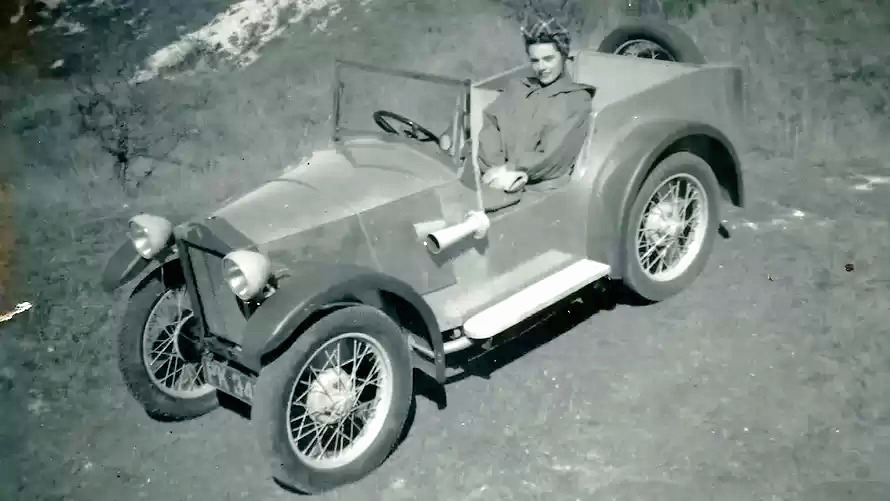 The Lotus
Mark 1 is on the left with the soon to be Hazel Chapman in the
passenger seat
The Lotus
Mark 1 is on the left with the soon to be Hazel Chapman in the
passenger seat
The Austin was modified to be a trials car, using many of the
construction techniques that Colin had learned while studying
aircraft construction at school. Colin continued to develop and
modify the Mark 1, including a innovative splitting and hinging of
the front beam axle to provide independent front suspension.
However, in the Spring of 1947 work on the Mark 1 tapered off to
benefit of Colin's studies and by the end of the year Colin
Chapman had completed his engineering studies and officially
attained B.Sc.(Eng).
Work had only begun on the new car when Colin enrolled in
military service in the RAF, where he learned to fly and
also became even more intrigued by airplanes and their
engineering. This was to prove an important influence for this
budding engineer, which would manifest itself gloriously on the
Formula 1 circuits of the world, in many different forms. Aerodynamics
was an area that had received little scrutiny from the leading
teams, other than the provision of "stream-lined" bodies.
A Mark 2 car, as seen on the right, was completed by late 1948 and it's speed and performance further enthused Colin's interest in motor sport. In September of 1949 Colin's term with the RAF was completed and he returned to civilian life. The Mark 2 was sold to Mike Lawson, the uncle of Sterling Moss, and Mike proved very successful with it. In the Autumn a new formula was introduced for circuit racing, 750cc Formula racing and by January of 1951 work on the Lotus Mark 3, a car designed to meet the requirements of this new formula, had begun. It was this third Lotus that really caught the eyes of the racing community.
With Colin in the driver's seat the Lotus Mark 3, on the
left, consistently won races- it was clearly the fastest of the
750cc Formula. The Mark 3 showed all of the now classic signs
of the future Lotus. It was light, lean, innovative.
It did not merely win, it pounded the competition into submission.
It forced the racing governing bodies to regulate specifically
against the Mark 3 to preserve equality. This was, as was to be
seen in the future, only the first of such occasions where rules
were written with Lotus specifically in mind. The die was set, the
racing community had been put on it's ear!
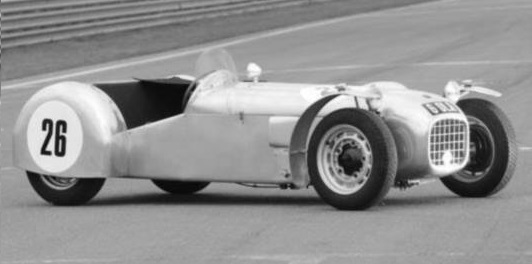
Mike Lawson returned to Colin ready to purchase a faster Lotus and
by the end of 1951 it was apparent that other competitors were
interested and inquiries began to flow into Lotus about obtaining
copies of this winning car. Accordingly, the Lotus Engineering
Company officially came into being on January 1st 1952,
located in Colin's father's building in
Hornsey. Copies of the Mark 3 were built and a Mark 4
design, as seen on the right, was put into motion.
A Mark 5 was shelved to design and build products for the
components market. With the Mark 6, on the left, Chapman used his
engineering knowledge to design a robust multi-tubular body-frame,
which was light, yet extremely rigid. There was no room for
excess, every tube had a specific purpose, resulting in a space
frame chassis which weighed only 55 pounds, and when panels and
mounting brackets were added the full up weight tipped only 90
pounds!
By late 1953 the Mark 8 was introduced and the level of
orders meant that Colin was no longer able to hold down two jobs:
he resigned from technical sales with the British Aluminum Company
and became full time leader of the budding Lotus company.
For a detailed look at all the locations around Alexandra Palace and Hornsey in North London, where Colin Chapman, his girlfriend Hazel and the Allen brothers, Nigel and Michael, developed the very first Lotus cars, click the image on the right
The next few years were spent pursuing victories at Le Mans, the cars; the Mark 9, the Lotus Eleven and the Lotus 14, Elite. By 1960 the Le Mans victories were in hand and Chapman's interests in racing turned from Sports Racer vehicles to open wheeled race cars, Formula Junior, Indianapolis Cars and the World Series of racing; Formula One, an arena dominated by the likes of Ferrari, Mercedes, Porsche, Cooper and BRM.
When Chapman died in December of 1982, from a massive heart
attack, no one questioned the indelible influence that Chapman and
his small English motor car company had upon the engineering and
manufacture of automobiles both for racing and for street. Every
single automobile on the race track and on the road today owes
some part of its design and engineering to Anthony Colin Bruce
Chapman and his company, Lotus.
Indeed, it has been said by many that Colin Chapman
accomplished more to influence the modern automobile than any
other human. Quite a statement considering the greats who are
Chapman's peers.
It is enough to say, that the automotive engineering and
automobiles are in their present state of development because of
Colin Chapman: innovator, genius, engineer, driver, founder
& enthusiast.
What is missed by automobile enthusiasts around the world is the feeling of great anticipation of what the brilliant mind of Colin Chapman would bring to the roadways for them to savor and enjoy and yet, the Lotus Legend lives within the walls of the Lotus factory in Hethel, England and with the current Formula One Lotus race cars.
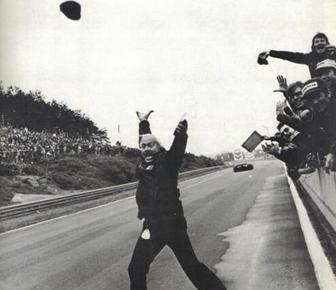
What is also missed by racing enthusiasts around the world, is the
sight of Colin Chapman's black cap sailing across the track as one
of his Formula One race cars streaked across the finish line at
one of the 78 Grand Prix races won by Lotus.

Rest In Peace Colin
ACBC - The letters that appear on the
famous Lotus badge?
They are the initials of the name of the
great innovator himself: 
Anthony Colin Bruce Chapman
LOTUS - The name of the company?
There have been several theories about the origins of the Lotus
name: none of which have been confirmed by Colin himself, his
family, the company or any of the Lotus clubs
Some avid theorists (including some owners!) would have it that the name is an acronym for Loads Of Trouble Usually Serious!! However, probably the most plausible explanation, is that one of Colin's very early projects started life as a car auction purchase, complete with a "lot" number and the car was sold-as-seen because it was unservicable or "u/s", as it is often abbreviated - after collection, the car apparently still carried the auction card, which read "LOT U/S"... and the rest is history!!
For more information on Colin Chapman, you might want to read: